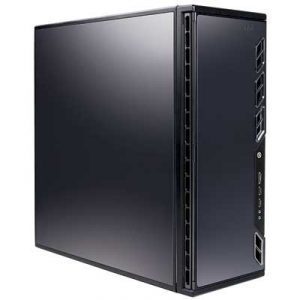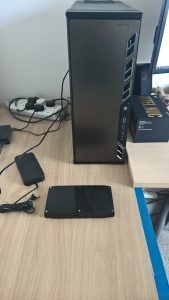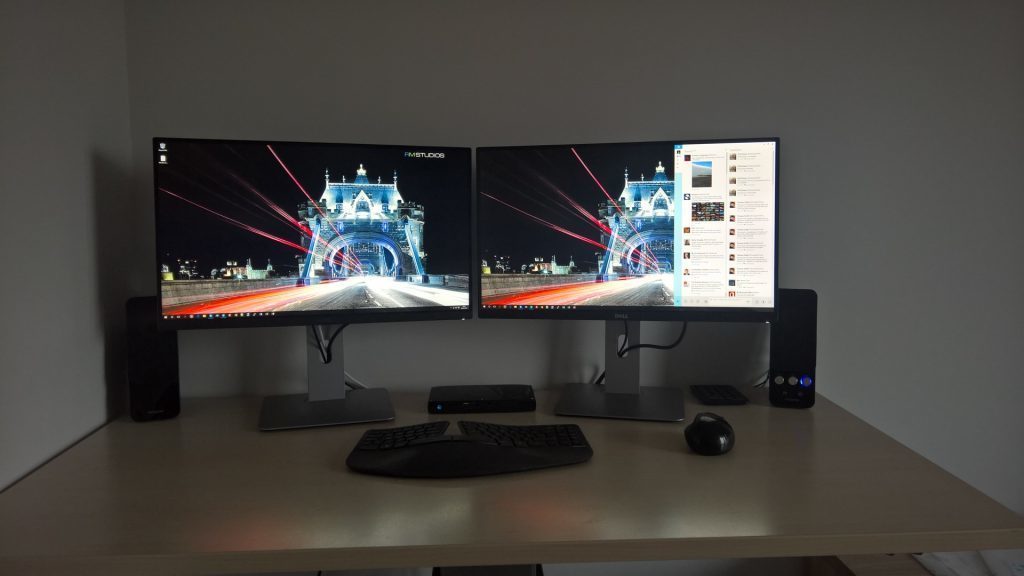Everything is changing, form factors, device usage, platforms, Microsoft is changing! and it seems to be changing in many exciting ways.
So lets look at what I believe Microsoft will do with the next version of Window (9, not the expected second update for Windows 8.1). I’m going to break down what I believe will happen for each form factor.
Please note, these points, are all conjecture based on rumors and notes from journalists and websites.
Phones
Firstly I expect to see Windows Phone, and Windows to become even closer, with even more shared. At the moment its pretty close, but I expect to see with Windows 9, it to finally be fully realised.
This means any app running on Windows, will run on Windows Phone, but also vice versa. We are almost there with Universal Apps, but its not fully realised yet, as many apps are still separate between the two platforms (Mail app, Office apps etc.).
I also expect to see a much closer alignment of the UI, and I hope to see the Charm bar make an appearance.
This will be the Phone SKU, which will be a super set of the Basic SKU I will discuss next. This SKU will be free.
Mini Tablets (ARM, Atom CPU) & ARM Tablets (Surface RT/2)
These devices will come with a new free SKU of Windows. Which I’m going to call the Basic SKU. This SKU will not have the desktop or any of the legacy Windows features. It will be a Metro only environment.
Along side this SKU, Microsoft will include a new product, Windows “365”, which given the System on a Chip, incompatibles or low power will be used to run legacy applications, and provide the user with a desktop. I suspect this service will be fairly cheap for consumers to utilise.
This will be the core new way Microsoft will compete with free OS’s like Android, iOS (OS X should be mentioned here but isn’t targeting cheaper device markets). This Basic SKU will be constantly updated (about every 6months, for free). This SKU will come with basic versions at the very least of the Office Touch apps.
By offering a free basic OS, they will be able to compete on device prices, while offering the user better enterprise integration, security and updates than others do, and a way for Microsoft to sell users up into their ecosystem.
Microsoft may along side this offer a basic subscription. Which would include OneDrive storage, full Office Touch apps, Windows 365, Skype usage, Xbox Music (or maybe a way to mix and match these bits). This subscription maybe also be used to unlock extra professional features within the Metro environment (think Enterprise only features, domain login for example).
It would also be nice for this SKU especially on Mini Tablets to be able to run ANY Windows Phone app, not just Universal Apps, I suspect this wont happen, as it will stop users moving to Universal Apps.
Note: Just because its a subscription to unlock features of Windows, do not take this to mean that the PC will have to be online constantly to be able to use those features. Just like how Activation doesn’t need a constant internet connection to remain activated, these will be something where you pay a monthly subscription OR you can buy a perpetual license (or for enterprise / school, volume licensing). The OS will just have to go online once in a while to recheck your license. Given that this is a consumer device, the expectation of internet access once every 30-90 days seems reasonable in this day and age.
Large Tablets (Surface Pro) & Convertible Ultra books
These will too come with the Basic SKU initially, but then you will be able to either buy a Professional SKU as a subscription (includes all future updates, while your subscribed) or a perpetual license (included updates for 2 years, then support for another 2-3 years, so 5 in total) for a one off cost for those who prefer that style. Enterprise customers will continue to use their Volume Licensing as per normal (which is basically a subscription anyway).
The Professional SKU will come with a fully working, as you would expect Desktop, with no restrictions like it does with Windows 7/8/8.1
This subscription will give you a Professional license for up to 3/5 devices including activating any features on other SKU’s
Laptops, PC’s – Legacy Form Factors
These devices will continue to be sold with perpetual Windows Professional licenses, which can be when first brought translated into a subscription (which includes 2 years free of the subscription as its already been paid through the OEM).
Although I suspect many OEM’s will keep to just include the Basic SKU to keep the price down, but that Microsoft will try to restrict this for the following reason.
The downside to this model, is I suspect it will frustrate and annoy consumers to get their new device home and find to run any of their desktop applications that they have to pay even more, when they feel they have already paid for the device (these would be cheap devices so were talking about ~£220 per laptop). If a user feels shafted at this point, chances are they wont understand the changes, and feel shafted by Microsoft, and not the OEM/Sales person (who is the person who really shafted them).
The positive side to this though is that because its just a Metro environment, OEM’s wont be able to include tons of painful to remove junk ware, they will only be able to include Metro apps, which the user can quite easily remove.
Conclusions
So I believe next year Microsoft will introduce 3 new SKU’s (excluding Enterprise SKU’s)
- Basic SKU (Free, Metro Only)
- Phone SKU (Free, Metro Only, Phone Optimised)
- Professional SKU – (Non-Free, enables Desktop on compatibles devices (x64, excludes Atom, drops x86?), Enterprise Metro features), Perpetual OR Subscription pricing.
In addition to these I suspect they will also start to offer Windows “365”, and a Microsoft Services subscription.
- Windows “365” – Offloads the desktop for devices (ARM, Atom) to run legacy applications in the cloud
- Services – OneDrive, Office 365, Skype, Windows “365”, Xbox Music, Advert removal in Outlook.com/Hotmail, in an all inclusive subscription, (or one which enables users to mix and match what they want) for all of Microsoft’s cloud services.
I think this is a nice rationalisation of Windows, and how the platform needs to evolve going forward. It protects existing markets for sales, and customers who want to do things in a what will be regarded as a “legacy” way. While allowing Windows to properly compete in a world with new devices and form factors, and where free is king.
It should be simple to describe to users, and for a user looking at a Chrome book/Android PC/Tablet should be persuade back to Windows, as price is no longer an issues. While Microsoft may not have the biggest App Store yet, it has the biggest selection of legacy applications. More apps (real apps, plus the web) than Chrome OS, and solves the many issues with Android (Security, Performance, Updates).
But the danger is that it offers, a new and untried business model, for Microsoft, and the technology world. Google gives Android away for free to try and profit from advertising, Microsoft is going it in a sort of “Apple” way, to try and upsell people into the app stores, and into the Microsoft Ecosystem.
Can Microsoft encourage its users to pay for its products and its ecosystem? I think its possible, but it will take ALOT for consumers to get used to. Microsoft is unlucky in that it has a extremely conservative user base that doesn’t like change, and while Windows 9 will offer something for everyone, legacy and new, I suspect, part of the media, may cry hysterically when Microsoft announces consumer subscriptions, if like usual Microsoft fails to explain its plans and positions, clearly to customers and the media alike (think of the shenanigans that came around, with Xbox One, when Microsoft announced it. They didn’t explain it brilliantly and the media ran with what they could infer, which was fear of change, plus it helps that conflict increases the number of clicks an article gets).
If Microsoft can get its story correct, and the media and user education correct, I think their onto a winner. I think with the changes we have recently at Microsoft makes me think they can just about do it.
Final Points
If Microsoft does this, what will it do with the Surface RT/2/Mini and other ARM tablets (the few that exist), who currently have a Desktop. Will they lose it? Will they mind if they use it? Or will Microsoft do a trade in / up scheme for users who feel let down by this, this will depend though on the numbers sold. Or maybe Microsoft will allow those users to block the update somehow? This will be the hard question for Microsoft to answer.
I feel partially that they should clear this up when they announce the Surface Mini, by introducing a new SKU of Windows RT or updating the existing SKU (forced update??), which doesn’t have a desktop but comes with the Office Touch apps (Beta) instead, and allow existing users to update to that SKU. This would give Microsoft a chance to test how it will deal with this issue before Windows 9.
If Microsoft forces this now, then when Windows 9 comes, it wont be a big negative point from any reviewers or the media.









